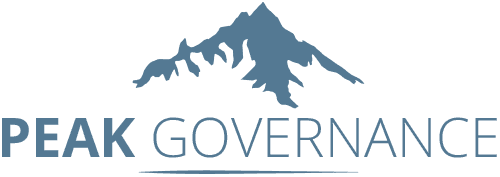Stop the Talent Exodus: Mitigate Risk with People Retention and Development
In today's competitive business landscape, retaining and developing your skilled workforce is no longer a luxury, it's mission-critical.
Losing just one key employee can cost your company 33% of their annual salary in recruitment and training expenses, not to mention the impact on productivity, morale, and client relationships. But fear not!
By actively managing the risk of employee turnover, you can create a thriving work environment where your people feel valued, engaged, and empowered to grow. Here's how:
1. Unmask the Culprits:
What drives talented individuals to seek greener pastures? A 2023 Gallup survey found that 54% of employees leave their jobs due to a lack of career development opportunities, followed by feeling undervalued or disrespected (40%) and work-life balance issues (32%). Conduct regular employee engagement surveys and exit interviews to identify the specific factors driving potential dissatisfaction in your organisation. Is it stagnant salaries, limited recognition, a rigid work-life balance, or lack of clear career pathways? Understanding the "why" behind potential departures is crucial for crafting effective solutions.
2. Invest in Development, Reap the Rewards:
Investing in your employees' professional development increases their retention rate by 15% (LinkedIn Learning). Implement programs like:
Mentorship: Pair experienced employees with new hires or high-potential individuals for guidance and support.
Internal training: Develop and deliver in-house training programs tailored to your specific needs and industry.
External conferences and workshops: Sponsor employee attendance at relevant industry events and professional development opportunities.
Tuition reimbursement: Help employees invest in their own learning and development by offering financial assistance for relevant certifications or educational programs.
By offering these opportunities, you're not just equipping your team with valuable skills, you're demonstrating your commitment to their personal and professional growth, fostering loyalty and engagement.
3. Foster a Culture of Recognition and Appreciation:
Don't underestimate the power of a simple "thank you." A 2022 SHRM study found that 70% of employees would leave their jobs for a company that recognizes their contributions, even if the pay were the same. Publicly acknowledge employee achievements, celebrate milestones, and offer meaningful rewards and recognition programs. Consider:
Employee of the Month: Recognize outstanding performance and contributions with a public announcement, personalised award, or bonus.
Peer-to-peer recognition: Implement a platform where employees can recognize and appreciate each other's contributions.
Team-based rewards: Celebrate team successes with group outings, bonuses, or catered lunches.
When employees feel valued and appreciated, they're more likely to stay invested in your company's success.
4. Bridge the Communication Gap:
Open and transparent communication is vital for building trust and loyalty. Hold regular one-on-one meetings to discuss career goals, address concerns, and provide feedback. Utilise anonymous employee surveys to gather unfiltered feedback and encourage upward communication mechanisms like suggestion boxes or town halls. By making employees feel their voices are heard and valued, you can proactively address concerns and create a collaborative work environment.
5. Prioritise Work-Life Balance:
In today's "always-on" world, burnout is a real threat. A 2023 study by Indeed found that 43% of employees experience burnout regularly. Offer flexible work arrangements, remote work options, and generous paid time off to help employees achieve a healthy work-life balance. Consider:
Flexible work schedules: Allow employees to adjust their start and end times to accommodate personal commitments.
Remote work opportunities: Enable employees to work from home or other approved locations, boosting productivity and reducing stress.
Unlimited paid time off: Offer employees the freedom to take time off as needed, promoting trust and reducing stress-related burnout.
Remember, happy and well-rested employees are more productive, engaged, and less likely to seek opportunities elsewhere.
Building a robust risk management strategy for people retention and development requires a proactive and holistic approach. By implementing these steps, you can create a work environment that attracts and retains top talent, mitigating the risks associated with employee turnover and fueling your sustainable business success.
Ready to take the next step?
Enquire about our comprehensive training programs designed to help you optimise your workforce strategy:
Risk for Profit Workshops: Gain practical insights and frameworks to manage talent retention as a strategic business imperative.
Risk Reduction Techniques: Learn proven strategies to identify and mitigate key risks associated with employee turnover.
Risk Management Training & Frameworks: Build a customised risk management framework for your organisation and equip your leaders with the skills to effectively implement and monitor it.
Remember, investing in your employees is an investment in your business.
So let's start mitigating the risk and building a sustainable future, one happy and engaged employee at a time.

